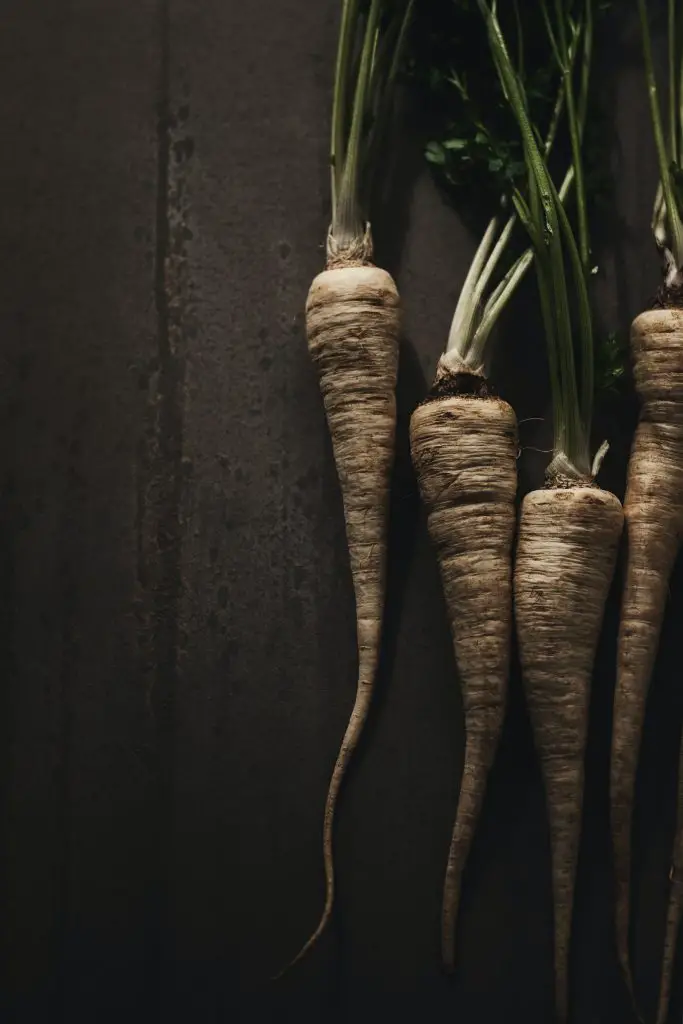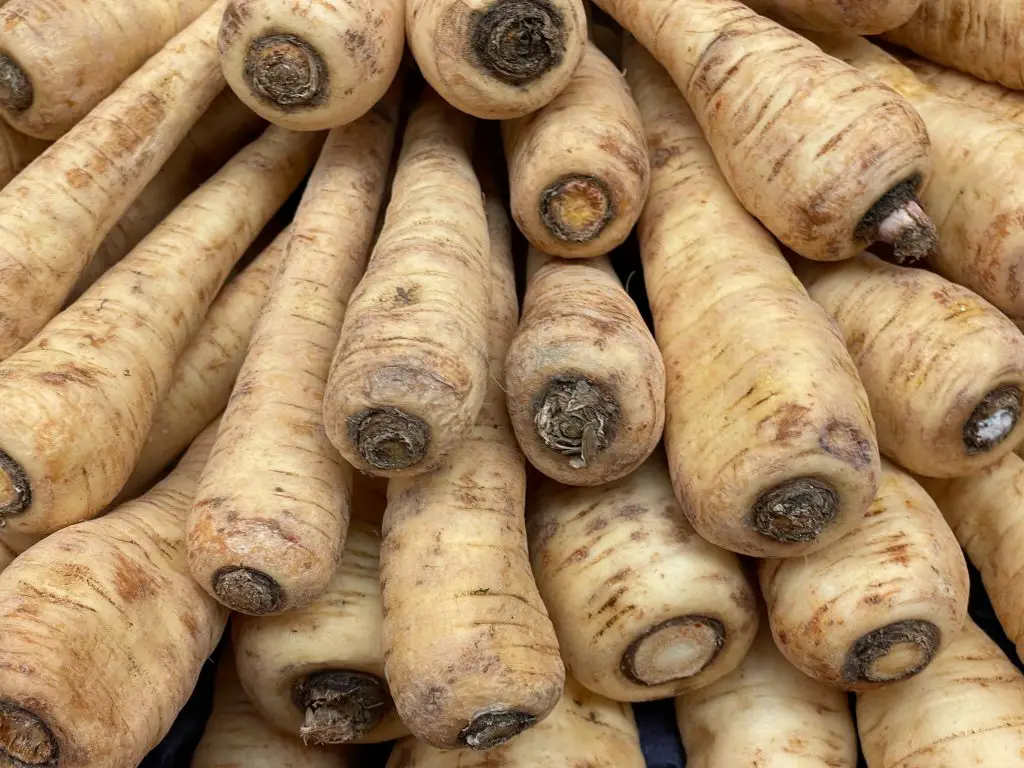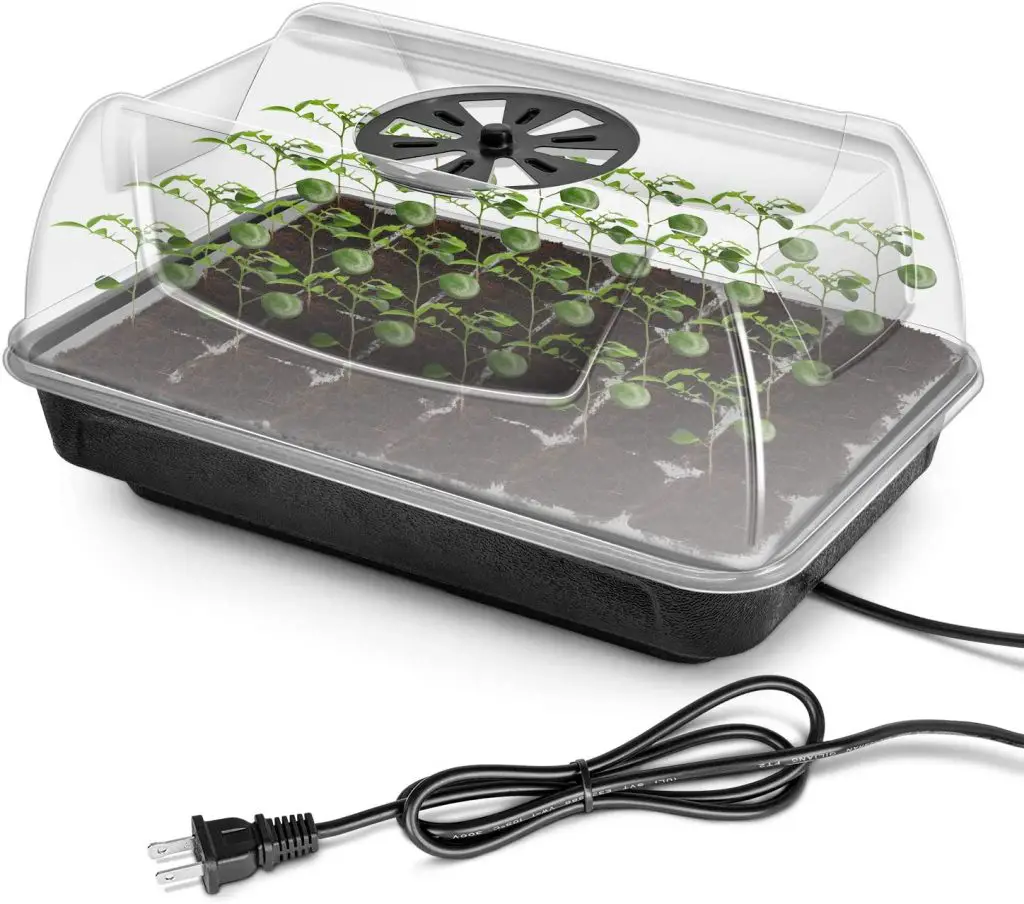How Long Does It Take For Parsnip Seeds To Germinate? How Much Does Temperature Effect It? Parsnip is one of the lesser-known winter vegetables that some people like to grow at home. However, parsnip has a reputation, like carrots, of being difficult to germinate as a result of this one of the most common question asked is how long does it take for parsnip seeds to germinate?
Parsnips are an extremely slow germinator and will take at least 14 days to appear even in ideal conditions of 68°F (20°C) according to a study published by the University of California. Below 50°F (10°C) it will take at least 4 weeks to germinate and heating above 68°F (20°C) will not help to accelerate the growth it will actually make it even slower. See the table below for details.
| Days To Germinate | Temperature (°F) | Temperature (°C) |
| 171.7 | 32 | 0 |
| 56.7 | 41 | 5 |
| 26.6 | 50 | 10 |
| 19.3 | 59 | 15 |
| 13.6 | 68 | 20 |
| 14.9 | 77 | 25 |
| 31.6 | 86 | 30 |
| – | 95 | 35 |
| – | 104 | 40 |
As a result of this extremely slow germination rate compared to other plants parsnips are well-known to be difficult to get going. One of the reasons that this is a case is because it is difficult to maintain moisture around the seeds consistently to ensure that the parsnips germinate. As a result, we do not recommend that you sow parsnip seeds directly for a couple of reasons.
The first reason is, as mentioned above, it is very difficult to maintain constant moisture for several weeks in a row in an environment where the seeds are sown in a shallow furrow. The second key reason is that because of the slow germination rate it is much better to plant them into seed trays to reduce the amount of time they spend in the ground occupying space.
This is particularly problematic when sowing in late summer when there is a large number of other types of crops which can be grown.

How To Plant Parsnip Seeds
To start parsnip seeds off start by filling the seed tray with a good quality seed raising mix. Once the soil is in seed trays it is important to compress the soil to create some plugs which will make it easier to transplant them into the garden later on.
Sow two seeds per cell at a depth of approximately half an inch in the soil to ensure that at least once he comes up in. If both seeds germinate then thin to the strongest seedling. Once the seeds are planted it is important to ensure that the seed tray remains moist.
However, to ensure that the plants remain at the ideal temperature it is important to keep the temperature at 68°F (20°C) ideally. If you live in a cold climate or an area that has a very short season it is best to plant the seeds in late winter or early spring using a heated propagation tray as this will provide much more consistent heat.
If you are considering purchasing a heated seed tray we recommend that you select one that has a removable seat tray and a humidity dome. The removable seed tray is important because this is the part of the unit that will deteriorate first being able to replace it will extend the life of the unit substantially.
The other key feature mentioned is the humidity dome which is important because it helps to maintain a constant environment for the seedlings to grow in. To see the latest price on Amazon for the unit that we recommend click on the link below.
Transplanting Parsnips Into The Garden
Once the seedlings have germinated they will typically need to spend another few weeks in the seed tray before being planted out in the garden. However, it is important to note that parsnips, like carrots, produce a long taproot relatively quickly so to avoid the chances of it being distorted it is recommended that the seedlings be transplanted as quickly as possible.
When selecting a location to transplant the seedlings into it is important to ensure that it gets at least 6 to 8 hours of sun per day ideally. However, parsnips will tolerate shady conditions but the rate of growth will be significantly reduced.
In terms of soil conditions, it is recommended that soil is rich moist, and free-draining with plenty of nutrients. However, parsnips are generally relatively forgiving in terms of the soil quality but if you have any doubts we would recommend that you add a bag of compost to the soil to improve the conditions.
Once the Seedlings are in position is a good idea to mulch soil well to ensure that it retains the moisture and suppresses weeds. To ensure that you end up with good quality parsnips it is important to water the plants regularly to avoid any chances of splitting.

Harvesting Parsnips
Parsnips can be harvested at any stage throughout the growing season however they do improve in terms of flavor if they are allowed to be exposed to frosty conditions. The reason for this is that it increases the sugar content of the parsnips over time.
As such the best time to harvest the parsnips is after there have been a few frosts but before the ground freezes solid if you live in an area where that occurs regularly. The main reason for digging out the parsnips prior to the big freeze is that they will be difficult to remove from the garden without damaging the root.
If you need to remove the parsnips they can be stored in damp sand in a root cellar or anywhere that is cool and dark for an extended period of time. The damp sand serves to mimic the conditions of the soil which allows the parsnips to remain in good condition for an extended period of time.
I hope you found this article useful and have great success growing parsnips at home in your own garden, if you have any additional comments or questions please leave them in the section below.
Feature Image:
“Parsnip, Farmers Market / 20090828.10D.52127.P1/ SML” by See-ming Lee (SML) is licensed under CC BY-SA 2.0.Copy text
Relevant Articles
Why Won’t My Parsnip Seeds Germinate?
Can You Replant Carrots That Have Been Pulled Too Early?
How Deep Do Carrots Grow? Does The Type Matter?

